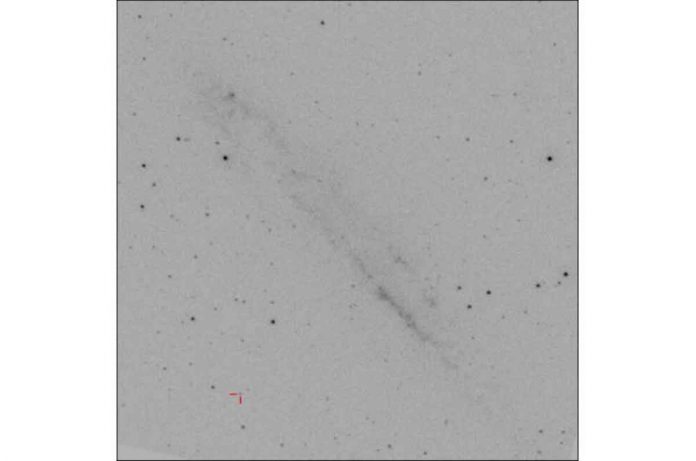Astronomers discovered a new cataclysmic variable (CV) through its ultraviolet (UV) bursting activity using NASA’s Swift spacecraft. The newly discovered CV, dubbed TUVO-21acq, was discovered as part of the Transient UV Objects Project (TUVO). The discovery is detailed in a paper published on arXiv.org on June 21.
Cataclysmic variables (CVs) are binary star systems composed of a white dwarf primary and a normal star companion. They fluctuate in brightness by a large factor, then return to a quiescent state. These binaries have been discovered in a variety of settings, including the centre of the Milky Way galaxy, the solar neighbourhood, and open and globular clusters. Mass transfer from the companion star occurs frequently in CVs via an accretion disc surrounding the white dwarf, and in some cases, thermal instability in the disc causes an outburst known as a dwarf nova (DN).
A team of astronomers led by David Modiano of the University of Amsterdam, the Netherlands, has discovered a new CV in the field that is aimed at the spiral galaxy NGC 4945. The new transient was discovered in the UV band, about six arcminutes from the galaxy’s centre. The discovery was made using data from Swift’s Ultraviolet Optical Telescope (UVOT).
“We discovered and characterised TUVO-21acq, a new cataclysmic variable in the UV, as part of our TUVO project. The first detection was made in February 2021 with the help of our dedicated pipeline TUVOpipe, which analyses daily UVOT data for transients. In January 2022, a second UV outburst was discovered “The researchers elaborated.
UVOT was used by the astronomers to constrain the properties of TUVO-21acq, with a focus on the amplitudes and timescales of the two outbursts. They discovered that the source’s brightness increased by at least 4.1, 2.4, and 3.5 magnitudes during the first outburst and by 4.4, 3.4, and 3.6 magnitudes during the second outburst in three UV bands.
The researchers determined lower limits for the first and second outburst durations by calculating the time between the first and last detections of each TUVO-21acq outburst, which were estimated to be 6.1 and 10.7 days, respectively. The upper and lower bounds for the first and second outbursts were calculated to be 21.1 and 45 days, respectively.
The amplitudes, durations, and recurrence time of TUVO-21acq’s outbursts, as determined by UVOT photometry, were found to be fully consistent with dwarf novae, according to the study. Furthermore, the spectrum’s overall shape and key emission features suggest that the source is a dormant cataclysmic variable. As a result, TUVO-21acq was classified as a DN CV by the astronomers.
“Based on photometric and spectroscopic properties, we confirm the nature of the source as an accreting white dwarf that underwent DN outburst,” the scientists concluded.
They went on to say that their discovery demonstrates TUVO’s ability to discover new, previously unclassified transients in the UV wavelength range.

